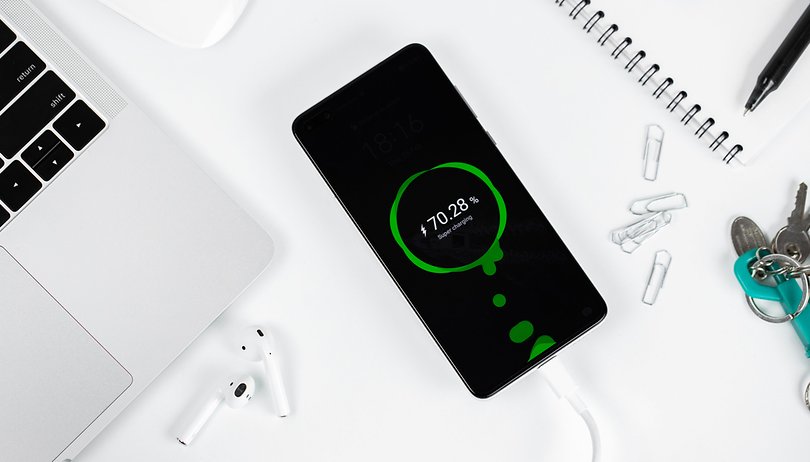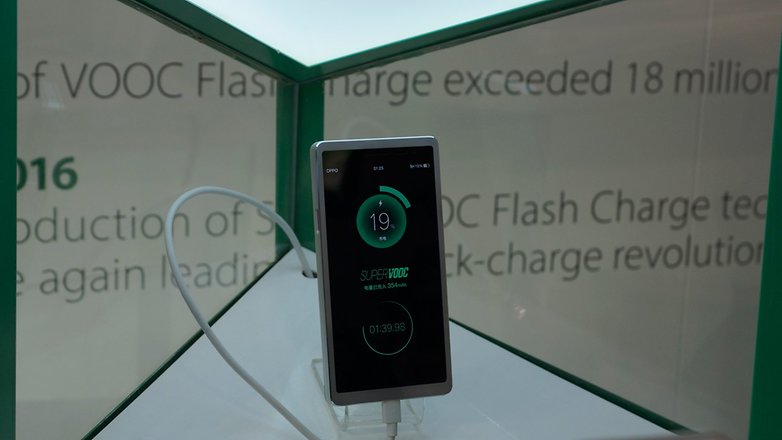Does Fast Charging damage your mobile phone battery?


Fast charging technology is here to stay and is a huge convenience. However, there have been several claims made about the adverse effects of fast charging on the life of the battery. Is that really the truth? And if that really is the case, why are manufacturers all gung-ho about it? I got to the bottom of this question and as it turns out, the answer is not a simple, straightforward yes or no.
Time and time again, I have read articles about how bad fast charging really is and to be honest, the claim isn't without merit. The fact that charging at 30, 65 or even over 100 watts puts more strain on the battery actually seems very logical as well. But is that even true and is the load so significant that you should do without this very practical, and often life-saving feature?
Jump to:
- Technology: how do rechargeable batteries work again?
- Why does my battery lose capacity?
- Quick-Charging: pros and cons
- Conclusion: Don't worry so much!
To get to the bottom of this question, I first had to think my way back to high school and read about electrons and protons.
Technology: How do batteries work again?
Pretty much all smartphones of today use lithium-ion batteries. Typically, most smartphones are at 100% charge in the mornings and as you use your phone throughout the day, the charge left on the battery declines- and on many occasions - completely empties. What you need to basically understand is that both these processes - charging and discharging - basically describe the movement of particles and, in this particular case, of negatively charged lithium ions.
When discharging, the lithium ions move from the negative electrode to the positive electrode and give off an electron in the process. These are returned to the positive electrode by an electric circuit and this is exactly what is used to operate electronic devices. At the positive electrode, they are taken up again by different transition metal ions, which - unlike the lithium ions - are not mobile.
During the charging process, it must be achieved that lithium atoms take up electrons again. To do this, the lithium atoms move from the positive electrode back to the negative electrode and are charged negatively again by a second electric circuit. For this purpose, they are intercalated between graphite molecules in a process called "intercalation". When the desired, or maximum, voltage is reached, this process is stopped and the battery is "full" again.
To ensure the process of charging is optimal, lithium-ion batteries in all smartphones have charging electronics that have certain protective mechanisms. Although lithium-ion batteries are more sensitive compared to the once very common nickel-cadmium batteries, they have a higher energy density and you no longer have to worry about the famous memory effect. Probably the biggest disadvantage of today's Lithium-Ion batteries is that the components oxidize over time and the battery loses capacity. Let's take a closer look at this!
Why is my battery losing capacity?
If you invested a lot of money in GameStop a few weeks ago and are now rich enough to afford an iPhone 12 Pro Max and put it in the drawer as an investment, you'll get a nasty answer from the buyer in five years. That's because even when not in use, the capacity of lithium-ion batteries steadily decreases from the first charge.
This loss is capacity is caused by chemical decay processes that damage the electrolyte as well as the anode and cathode materials. While you can't do too much about this capacity loss, what you can do is to pay a little attention to the temperature at which your phone operates.
Another issue that you will need to contend with is something known as cycle ageing. This is essentially a fany term to define the loss of capacity after each charge and discharge cycle. The wear and tear processes not only have a negative impact on the chemical processes, they also attack the materials used around the battery. This is where we can finally step in and see how we can keep our batteries healthy with a little care.
A strong influence on how much the materials are chemically and mechanically stressed is the depth of discharge. Charging in the range below 10 percent and in the range between 90 and 100 percent is particularly critical. So the first tip you can take away is to charge your phone only in this optimum range! The level of charging currents is also crucial, which finally brings us to the topic of quick-charging.
Quick-Charging: pros and cons
Even though many quick-charging technologies have been established over the last few years, they are all the same in principle: Instead of charging the phone's battery constantly with the same amperage for, say, three hours, charging takes place in several stages. When the battery is empty, it is supplied with a lot of power for a short period of time. The rest of the charging process is more moderate to keep the temperature as well as the stress on the material and battery as low as possible. As we just found out, we should now consider here how much stress is put on the chemical and the mechanical components.

Lithium-ion batteries are sensitive to one issue in particular: heat! In a 2018 study, it was found that the optimal temperature range for high energy density lithium-ion batteries is between 15 and 35 degrees. To monitor battery temperature, most modern smartphones feature temperature sensors that will stop fast charging if it detects an abnormal rise in temperature. Oppo, which is a big proponent of fast charging, was recently quoted saying that its 125-watt SuperVOOC technology only works if the battery temperature is below the 40-degree mark. Oppo also assures that the battery only loses 20 per cent of its capacity after 800 charging cycles. So a 5,000mAh battery would have 4,000 mAh left after about 2 ½ years of use.
A second problem I see with retrospect to cyclic capacity loss is the fact that a battery is exposed to a lot of voltage for a brief moment. However, as an iFixit engineer told Cnet, that's not a worrisome stress for a lithium-ion battery, as it can absorb a lot of energy when empty. He compares the whole thing to a sponge, which can absorb a lot of water when dry- but can't do so when it is already wet. So, in order not to make a mess, you would have to slowly sprinkle this water battery with additional water after the initial boost. For this reason, Quick-Charging is done cyclically and only when the level of discharge actually allows for that much energy.
Conclusion: Don't worry so much!
Quick charging in smartphones is a fine act of balancing. On one hand, it has to ensure that the charging tome is conveniently low while on the other, it is also essential that the device itself does not suffer from long term damage because of continuos fast charging. Although manufacturers avoid damage to the battery by using intelligent charging electronics or tricks such as splitting the battery in two, they still deliberately push the limits of what is healthy for a mobile phone battery.
Despite all the tricks, the stress on the material is higher when higher currents are used. This is because even if the voltage is taken away when the temperature is too high, circuits and the components of the battery are at their limit for a certain period of time. However, both the iFixit technician interviewed by Cnet and a technician from the German repair service Kaputt.de do not necessarily see this as a reason to abandon Quick-Charging. The latter replied to me as follows:
Overall, Quick-Charging has no noticeable impact on the lifespan within the usual two years that it's designed for. After that, you may see a greater decline in battery health than you would with other usage.
So, we have to answer "yes" to the question of whether permanent Quick-Charging puts more stress on the battery and materials. However, it is questionable whether the charging capacity decreases so significantly in the process that it justifies the concerns about battery hygiene and waiting due to longer charging times when not in use. After all, the goal after buying a smartphone is to get the most out of a device after spending 200, 500 or even 1,000 euros on it.
If you opt for quick-charging, you'll make better use of your phone's capabilities and theoretically get more out of it in the first few years, since it'll be plugged in less. If you don't use it and turn it off in the settings, you might gain a little more independence from the socket in two or three years - which do you prefer?
We find the topic of user behaviour in dealing with smartphones exciting and therefore a poll on the topic will follow this week at NextPit. So until Friday, it's best to think about how long you use your current phone and how many years of use you plan to have with a new phone. I am curious!











It is absolutely crazy that 2 years lifespan for a phone is widely accepted, such a waste! I agree with HD2 comment, at least 4-5 years would be reasonable and I hope replaceable batteries are back some day!
Thanks for your article.
I would expect to keep a new phone for 5-7yrs, so maintaining battery capacity is important to me.
A previous Nokia phone of mine, with a readily replaceable battery, is in daily use at 15yrs old.
No, I am no tech-averse, just resentful of short design life electronics.